Dr. Bullmore discussed the beginnings of structural imaging in schizophrenia, the work by Dr. Crow that first demonstrated ventricular enlargement. Dr. Bullmore then talked about a meta-analysis done of 58 structural imaging studies involving 1,588 patients with schizophrenia. The results are limited by the fact that most of the studies in this meta-analysis focused on regions of interest in the frontal lobes, temporal lobes, and basal ganglia. The experimental designs also included a wide variety of scanning methods and predominately used a case-control design. These factors complicate study analysis, yet it did show gray matter deficits.
Dr. Bullmore sites several limitations of the currently used region of interest analysis method. These include the need for a prior hypothesis, lack of comprehensibility, and localization problems. It is also very labor intensive. In contrast, the computational morphometric method of analysis (which he now uses) requires no prior hypothesis, is automated, comprehensive, and robust and reliable. It does have problems associated with brain warping algorithms. Large numbers of multiple comparisons cause possible false positives.
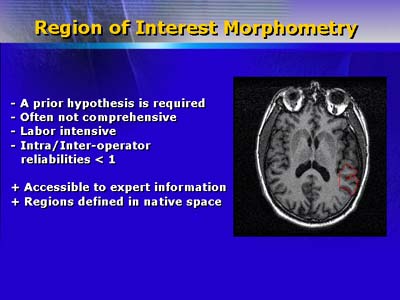
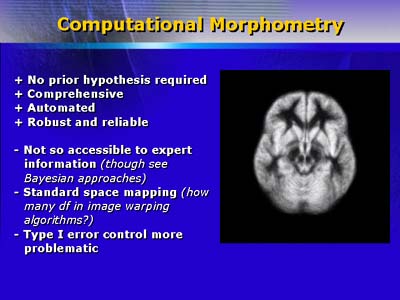
He then described the precise methodology used in his lab and described some results in patients with schizophrenia: gray matter deficits in the medial temporal lobe, superior temporal gyrus, and medial frontal cortex. In contrast, he reported gray matter excess in the basal ganglia of these patients. While looking for deficits in connectivity, his group found deficits in the white matter tracts between the left frontal and temporal lobes.
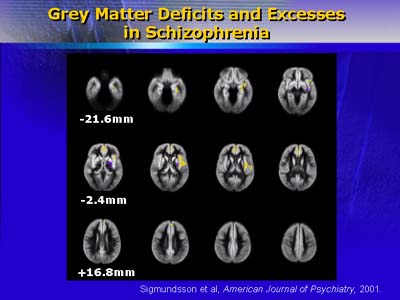
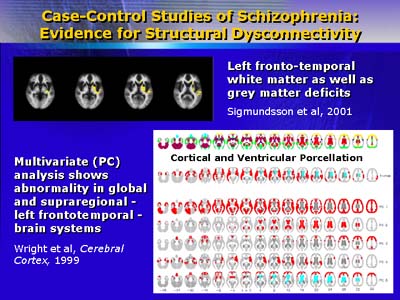
Dr. Bullmore cited a preliminary study of 19 young patients with prodromal symptoms who were scanned at baseline and after one year. Of the 19, 9 patients had become frankly psychotic. There were gray matter changes in the left parahippocampal region of these patients. However, Dr. Bullmore cautioned that there is no systematic study of the normal variability in different brain regions in normal controls. He noted that this is a deficit in the literature.
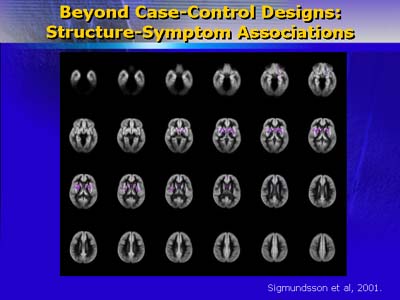
For the future, he suspects there will be more findings of disturbed connectivity and more studies of the structural correlates of aspects of psychosis. He would like to see the discovery of genetic modulators of normal brain structural variability.